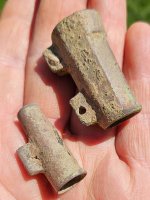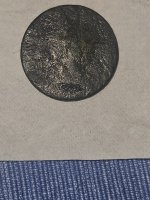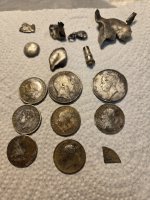Old Bookaroo
Silver Member
- Dec 4, 2008
- 4,326
- 3,514
I think all sides can agree that the battle between treasure hunters and archaeologists is going to be fought for a long, long time.
NPR “Morning Edition” Story just ran (May 4, 2011) an excellent story about the commercial recovery of a 9th Century shipwreck found in Southwest Asia and the fight over whether the Smithsonian Institution should host an exhibit of the recoveries. You can listen to the story and read more about it at:
http://www.npr.org/2011/05/04/135956044/from-beneath-a-smithsonian-shipwreck-controversy
Here are details on the traveling exhibition:
http://www.asia.si.edu/Shipwrecked/
It's important to note that this website includes a section on "Underwater Cultural Heritage – ISSUES RAISED BY THE BELITUNG SHIPWRECK."
Essential background reading on treasure wrecks in these waters include Frank Pope's first-rate Dragon Sea; A True Tale of Treasure, Archaeology, and Greed Off the Coast of Vietnam (2007); Tony Well's comprehensive Shipwrecks and Sunken Treasures in Southeast Asia (2002); and Treasures of the Deep; the Extraordinary Life and Times of Captain Mike Hatcher one of several books written about this area by Hugh Edwards (2000).
Good luck to all,
~The Old Bookaroo
NPR “Morning Edition” Story just ran (May 4, 2011) an excellent story about the commercial recovery of a 9th Century shipwreck found in Southwest Asia and the fight over whether the Smithsonian Institution should host an exhibit of the recoveries. You can listen to the story and read more about it at:
http://www.npr.org/2011/05/04/135956044/from-beneath-a-smithsonian-shipwreck-controversy
Here are details on the traveling exhibition:
http://www.asia.si.edu/Shipwrecked/
It's important to note that this website includes a section on "Underwater Cultural Heritage – ISSUES RAISED BY THE BELITUNG SHIPWRECK."
Essential background reading on treasure wrecks in these waters include Frank Pope's first-rate Dragon Sea; A True Tale of Treasure, Archaeology, and Greed Off the Coast of Vietnam (2007); Tony Well's comprehensive Shipwrecks and Sunken Treasures in Southeast Asia (2002); and Treasures of the Deep; the Extraordinary Life and Times of Captain Mike Hatcher one of several books written about this area by Hugh Edwards (2000).
Good luck to all,
~The Old Bookaroo





